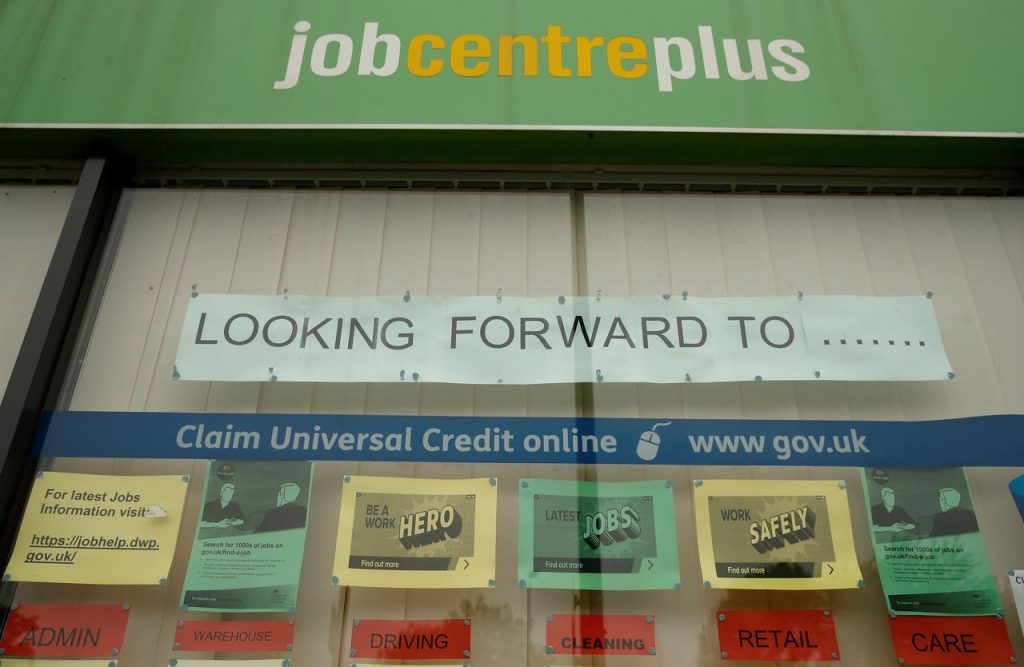The slide in Britain’s jobs market eased in June, data showed, although the figures did not include the most recent slew of job losses and analysts said they represented a “calm before the storm” caused by the coronavirus’ hit to the economy.
The number of employees on company payrolls tumbled by 649,000 between March and June, but the largest falls came at the start of the lockdown, the Office for National Statistics said on Thursday.
The number of people on payrolls fell by just over 74,400 in June, a much smaller decline than April’s 450,000 and May’s 124,000.
Separate figures showed Britain’s unemployment rate unexpectedly held at 3.9% in the three months to May.
A Reuters poll of economists pointed to a rise in the unemployment rate to 4.2%.
An ONS official said the unemployment rate was held down by around half a million people who were away from work because of the pandemic and receiving no pay but who said they believed they still had a job.
Even so, the number of people in employment in the three months to May fell by the most since 2011, down 126,000, driven mostly by self-employed people, the ONS said.
“It’s clear that we’re in the middle of a severe economic downturn,” finance minister Rishi Sunak said.
“I know people are anxious about losing their jobs and incomes. As I said last week, we will never accept unemployment as an unavoidable outcome, which is why I set out our clear plan last week to protect, support and create jobs.”
Sunak last week announced his latest, 30 billion-pound ($37.6 billion) round of measures to stem an expected surge in unemployment, including the payment of bonuses to companies which take back furloughed workers who are currently protected by his job-retention scheme.
But since then a string of companies have announced layoff plans ranging from private security company G4S (GFS.L) to retailers Boots and John Lewis.
Thursday’s data showed the number of people claiming Universal Credit welfare unexpectedly fell in June, dropping by 28,000 to 2.631 million, but remained more than double its figure as recently in March.
The figure includes people who are in work but are entitled to support due to their low income.
Yael Selfin, chief economist at KPMG UK, said the data “represented the calm before the storm” as the government’s furlough scheme shielded the labour market.
“But as the Job Retention Scheme unwinds in coming months, the full impact of the recession on unemployment is likely to be revealed.”
There was another sign of the broader weakness in the labour market in the number of vacancies, which fell in the three months to June to the lowest level since the data series began in 2001 at 333,000, 23% lower than the previous record low in 2009.
The data showed a hit to pay, pushed down by the large number of people on the government’s emergency job retention scheme, most of whom have been receiving 80% of their pay.
Average total pay, including bonuses, fell by an annual -0.3%, the first negative figure since 2014 and its biggest fall since 2009. Growth in regular pay slowed to 0.7%.



